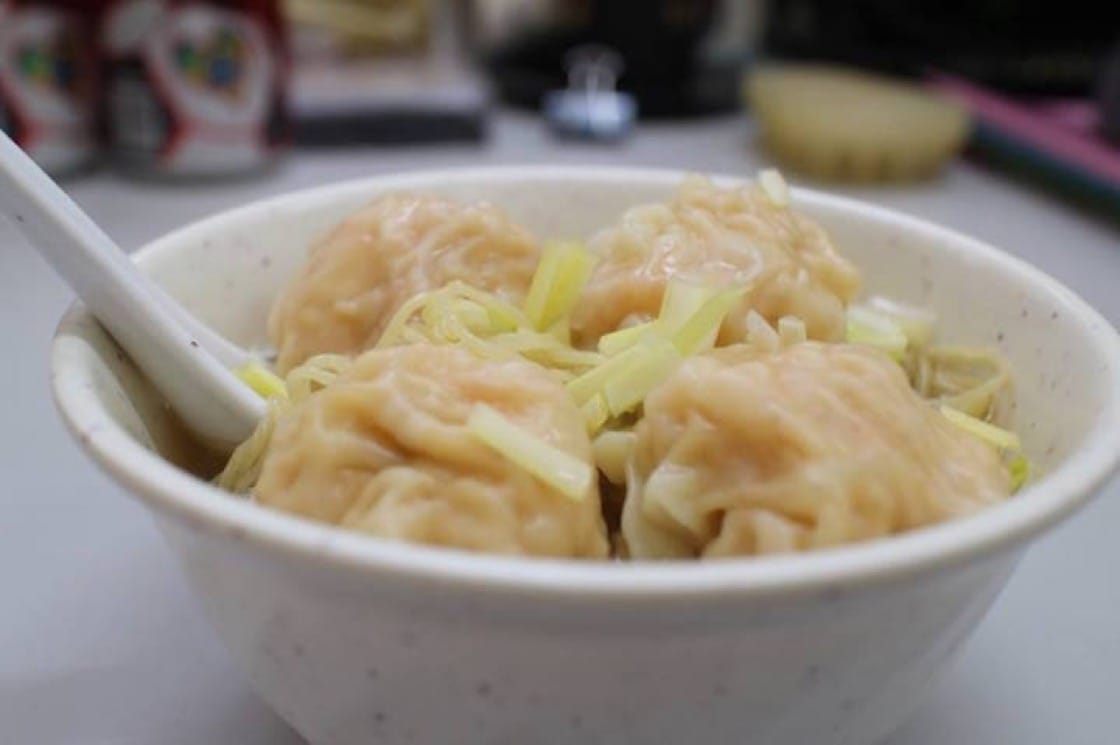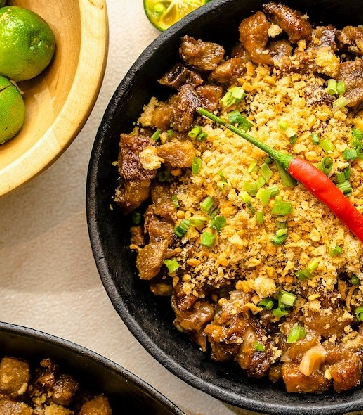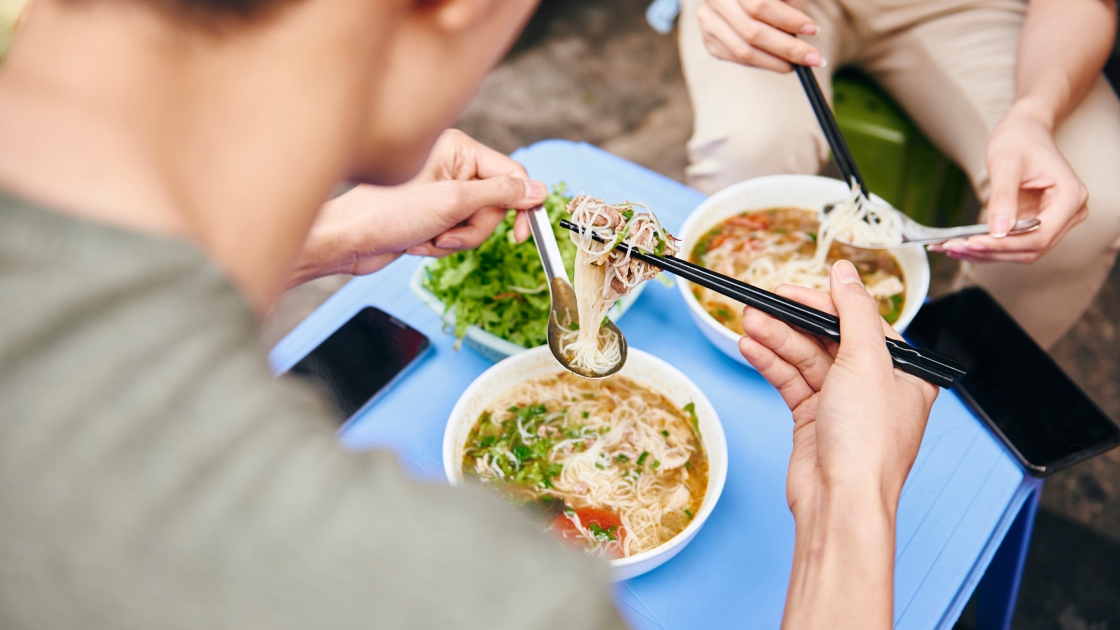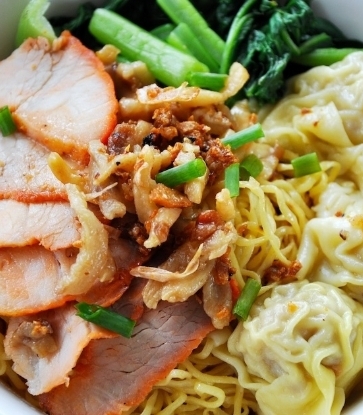“I began eating wonton noodles at four years old, and I never get bored of it. I just spent seven days on vacation. Right after the return, I rushed back to the shop of a bowl of wontons to satisfy my craving,” says the owner of Mak Man Kee Noodle Shop, one of the restaurants included in the Michelin Guide Bib Gourmand Restaurants for the first time this year.
Wonton Noodles That Stand the Test of Time
The origin of Mak Man Kee can be traced back to Guangzhou wonton legend Mak Woon-Chi and his venture Chee Kee. Mak Man Kee began operation in 1945 as a street food cart in Jordan. As the popularity grew, it found a permanent home on Parkes Street. It’s fair to say the restaurant witnesses the transformation of the neighbourhood over the years, and it is an important cog in the progression of Jordan’s culinary scene.
“We started with only a few options like wonton and boiled dumplings. After moving into this shop, my parents, my cousin and a good friend collectively laid a strong foundation to our success, adding items such as pig’s trotters, beef brisket and soybean paste noodles,” Mak says. Initially working as a civil servant, she returned to Mak Man Kee in the 1990s and fully took over the business in 2003 when her mother passed away.

Wonton Wrapping 101
Mak Man Kee sells 900 to 1,000 bowls of wonton noodles every day. Every piece of wonton is homemade alongside dumplings, pig’s trotters, beef brisket and soybean paste. As one can imagine, the amount of work going into it is immense. When it comes to the technique of wrapping a wonton, Mak wasn’t tight-lipped about her secret of success.
“It’s about the constant trial and error. The force you use in wrapping the wonton is a matter of experience. Too much of it would make the wonton too hard, on the contrary it could break apart if it wasn’t wrapped tightly. It takes time to explore the optimal amount,” she explains.
The restaurant’s “dumpling queen,” Ling, showed us how it’s done: her skills are so proficient that it only took her three moves and five seconds to turn the raw ingredients into a fully formed wonton. Mak gave us her commentary along the way.
“Arch the left hand slightly to the shape of a bowl. Snatch up the appropriate amount of filling (around the size of a shrimp) onto the palm. Close the middle three fingers of your hand, and then the little finger. Finally fold the wonton together with the thumb, and the wonton is finished.”
It’s definitely easier said than done. Though less appreciated as an art form, the delicate touch of wrapping wonton rivals the level of craftsmanship in kneading sushi, which takes chefs decades to master.

Two Key Points in Cooking Wontons
There are two common questions surrounding how wonton should be cooked. Should we cook it immediately after wrapped?
“I don’t find a big difference either way. Sometimes let the wonton sit for a while, the flavours of the fillings would blend together better. Given the fast turnover of wontons and dumplings at our shop, it’s impossible to wrap wontons and cook them to order. We have enough wontons in the refrigerator. The orders never stop, and the wrapped wontons are cooked and served within 24 hours,” Mak says.
Do we need a large pot of water to cook the noodles and wontons?
“It’s not [always] the case. From our experience, it’s fine as long as there’s enough water to cover the wontons. The large pot you see in noodles shops exists because they need to make several orders at the same time.”
It’s noteworthy that the noodles and wonton skin used by Mak Man Kee are made from a recipe developed over years by a producer Mak knows very well. “It’s not a secret recipe in any way. Everyone in the business knows about it. Of course, outsiders would find it mysterious,” she responds.
Not forgetting the contribution of the previous generation nor withholding any secret, Mak Man Kee’s wonton is very personable, not out of this world but fits right into our day to day life. Follow the recipe below and make it at home.
Wonton
(12 pieces)Ingredients
12 pieces Wonton skin
12 medium sea shrimps
1/2 Egg, beaten
Dried flounder powder
Sesame oil
Powdered and fried sesame
Salt
Sugar
Wrapping Method
1. Remove the shell and vein of the shrimps. Place them in a strainer under running water and rinse for a few minutes.
2. Soak the shrimps in iced water for five minutes then dry.
3. Add appropriate amounts of dried flounder powder, sesame oil, powdered sesame, salt and sugar to the shrimp. Mix evenly.
4. Let the shrimp sit for 15 minutes to absorb the flavours.
5. Add the egg to the mixture. Stir thoroughly.
6. Arch the left hand into the shape of a bowl. Take out a portion of the fillings (equivalent to a shrimp). Making use of the wooden wonton pick, bend the three middle fingers towards the palm, then the little finger. Fold the wonton with the thumb finally.
7. Rest the wontons for a while to let the flavours blend together.
Cooking Method
Place the wontons into a pot of boiling water. Cook for about one and a half minutes until they rise above the surface. Serve immediately.
Wonton Broth
Mak Man Kee’s broth is a combination of dried shrimp roe, pork bone, dried flounder and Chinese cured ham cooked for six to eight hours. At home, you can prepare a simpler broth with Japanese soy sauce and mirin.
Tips
1. The grip on the wonton as you wrap it plays a deciding factor to its texture. There’s no other way to avoid the wonton getting too loose or too hard than constant practice. Retain a bit of air inside the wonton, so it would turn out light with a “goldfish tail” effect.
2. Powdered sesame is a vital ingredient which absorbs excess moisture in the filling and raises the aroma.
3. Don’t cook the wonton for too long. Otherwise the shrimp filling would shrink and get tough.






















